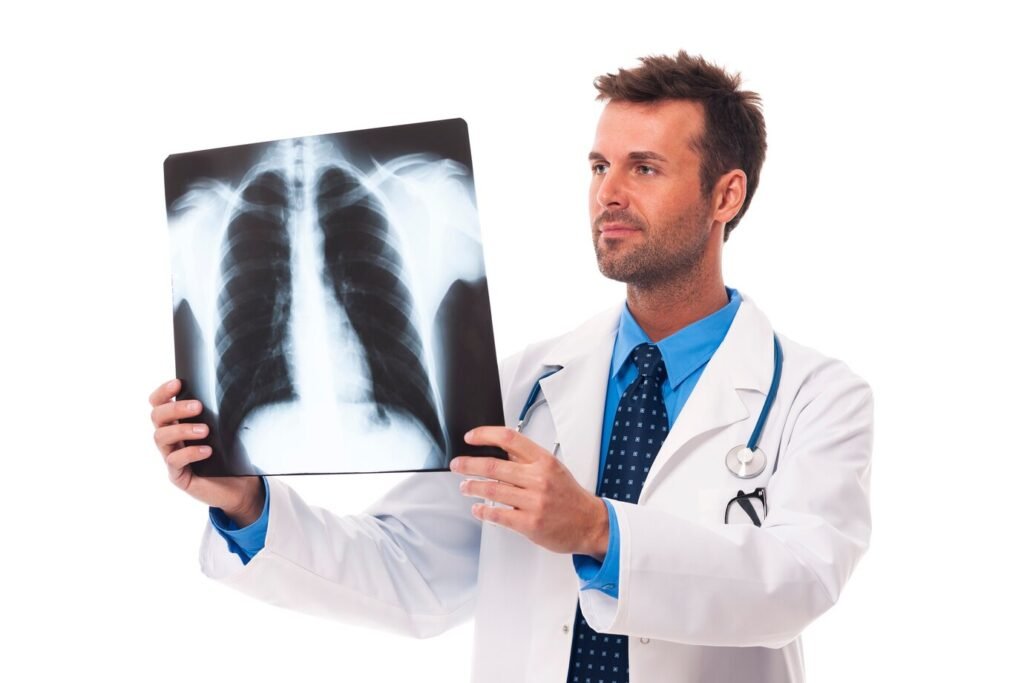Chronic Obstructive Pulmonary Disease (COPD) is a progressive respiratory condition that significantly impacts the quality of life for millions worldwide. As an umbrella term for chronic bronchitis and emphysema, COPD is characterized by persistent breathing difficulties, which can lead to severe health implications. This article aims to provide a thorough understanding of COPD, including its causes, symptoms, diagnosis, treatment options, and lifestyle adjustments that can improve patient outcomes. By the end, you will have a well-rounded view of COPD and actionable insights to manage or support those affected by this condition.

Table of Contents
What is Chronic Obstructive Pulmonary Disease (COPD)?
Chronic Obstructive Pulmonary Disease refers to a group of lung diseases that cause breathing difficulties due to airflow obstruction. The primary conditions under the Chronic Obstructive Pulmonary Disease (COPD) umbrella are chronic bronchitis and emphysema. Chronic bronchitis involves inflammation of the bronchial tubes, leading to mucus production and coughing. Emphysema, on the other hand, involves damage to the alveoli, the tiny air sacs in the lungs, which impairs oxygen exchange.
Key Statistics on Chronic Obstructive Pulmonary Disease (COPD)
- According to the World Health Organization (WHO), COPD is the third leading cause of death globally.
- In the United States, approximately 16 million people are diagnosed with COPD, with millions more undiagnosed.
- The disease is often preventable, primarily linked to smoking and environmental factors.

Causes of Chronic Obstructive Pulmonary Disease (COPD)
Understanding the causes of COPD is crucial for prevention and management. The primary risk factors include:
- Smoking remains the primary and most significant cause of Chronic Obstructive Pulmonary Disease (COPD). The harmful effects of long-term exposure to tobacco smoke are profound, as this exposure causes extensive damage to the lung tissues. Over time, the continuous inhalation of cigarette smoke triggers chronic inflammation within the lungs, leading to a progressive decline in pulmonary function that characterizes Chronic Obstructive Pulmonary Disease (COPD).
- Air pollution significantly contributes to the onset and progression of Chronic Obstructive Pulmonary Disease (COPD) as well. Individuals who experience prolonged exposure to various harmful pollutants, which may include particulate matter like dust, irritating chemical fumes, and notably, indoor air pollution from activities such as cooking and heating, are at an increased risk for developing this disease. These environmental factors can exacerbate existing conditions and lead to further lung degradation.
- In addition to lifestyle choices and environmental factors, genetics play a crucial role in an individual’s susceptibility to lung diseases like COPD. Specifically, a genetic disorder identified as Alpha-1 Antitrypsin Deficiency can elevate the risk of serious lung damage. This condition affects the body’s ability to produce a protein that protects the lungs, ultimately making those affected more vulnerable to developing chronic lung conditions such as Chronic Obstructive Pulmonary Disease (COPD).
- Lastly, age is a significant factor when it comes to the prevalence of Chronic Obstructive Pulmonary Disease (COPD). Research indicates that this condition tends to occur more frequently in people who are over the age of 40. This trend can be attributed to the natural decline in lung function that occurs as individuals grow older. The cumulative effects of various risk factors, including smoking, pollution, and genetic predispositions, often manifest as chronic respiratory issues in this older demographic.

Recognizing Symptoms of Chronic Obstructive Pulmonary Disease (COPD)
Early detection of Chronic Obstructive Pulmonary Disease (COPD) can significantly improve management and quality of life. Common symptoms include:
- Chronic Cough: This condition involves a cough that persists over a lengthy period of time and often results in the production of mucus. It is commonly known by the term “smoker’s cough,” as it frequently affects individuals who smoke, though it can also be seen in non-smokers who have other underlying respiratory issues.
- Shortness of Breath: This symptom often begins to manifest during physical exertion, such as during exercise or climbing stairs. However, as the condition progresses, the experience of shortness of breath may become increasingly severe, ultimately occurring even when the individual is at rest, causing significant distress or discomfort.
- Wheezing: This is characterized by a distinctive whistling or squeaky sound that occurs during breathing, often signaling that the airways have narrowed. Wheezing can be present during inhalation or exhalation and is commonly associated with asthma and other respiratory conditions.
- Chest Tightness: Individuals experiencing this sensation often describe it as a feeling of pressure or constriction within the chest area. It can create an uncomfortable awareness of the chest, potentially making breathing feel inhibited or restricted, thus affecting overall comfort and respiratory function.

When to Seek Medical Attention
If you or someone you know experiences a combination of these symptoms, especially if they worsen over time, it is essential to consult a healthcare professional. Early diagnosis can lead to more effective treatment strategies.
Diagnosing Chronic Obstructive Pulmonary Disease (COPD)
Diagnosis typically involves a combination of the following:
- Medical History: An extensive and careful examination of symptoms associated with respiratory health will be conducted, along with a detailed smoking history to assess the patient’s tobacco use. Additionally, the healthcare provider will explore any exposure to potential risk factors that could contribute to lung dysfunction or respiratory diseases. This comprehensive approach ensures that all relevant information is gathered to aid in accurate diagnosis.
- Physical Examination: During the physical examination, a qualified healthcare provider will utilize a stethoscope to listen closely to the sounds produced by the lungs. This step is crucial in identifying abnormal lung sounds that may indicate underlying issues such as inflammation, obstruction, or other respiratory complications. By analyzing these sounds, the healthcare provider can gain insights into the patient’s lung condition and overall respiratory health.
- Pulmonary Function Tests (PFTs): Pulmonary function tests are essential diagnostic tools designed to measure both lung capacity and the rate of airflow within the airways. These specific tests are instrumental in corroborating a diagnosis of Chronic Obstructive Pulmonary Disease (COPD) by evaluating how well the lungs are performing. The results obtained from these tests can provide critical data that aids in the understanding of the severity and impact of the disease on the patient’s daily life.
- Imaging Tests: To further assess lung health, imaging tests such as chest X-rays or CT scans may be utilized. These imaging techniques offer visual evidence of any damage present in the lung tissues, allowing for a clearer understanding of the extent of the disease. The results of such imaging studies are invaluable in confirming the presence of any lung abnormalities, thereby assisting healthcare providers in making informed treatment decisions.

Treatment Options for Chronic Obstructive Pulmonary Disease (COPD)
While there is currently no cure for COPD, various treatment options can help manage symptoms and improve quality of life:
1. Medications
- Bronchodilators are a class of medications that work by relaxing the muscles that surround the airways. This relaxation helps to open up the air passages, making it significantly easier for individuals to breathe. By facilitating better airflow, bronchodilators play a crucial role in managing respiratory conditions.
- Steroids, particularly inhaled corticosteroids, are another important type of medication used in respiratory therapy. These inhaled steroids are effective in reducing inflammation within the airways, which can help alleviate symptoms associated with various respiratory issues. By decreasing the swelling and irritation in the air passages, these medications can lead to improved breathing and overall lung function.
- Combination inhalers are innovative formulations that incorporate both bronchodilators and steroids in a single inhaler for greater therapeutic benefit. This combination not only helps to relax the airways but also addresses inflammation simultaneously. The dual action of these combination inhalers can provide enhanced relief for patients dealing with chronic respiratory conditions, ensuring that they experience a more comprehensive approach to their treatment.
2. Oxygen Therapy
For individuals who are experiencing low levels of oxygen in their bloodstream, it may be necessary to provide supplemental oxygen in order to ensure that they maintain an adequate level of oxygen saturation that is required for proper bodily functions.
3. Pulmonary Rehabilitation
This program thoughtfully integrates education, physical exercise, and comprehensive support to empower individuals in effectively managing their condition. By combining these essential elements, participants are provided with the tools and resources they need to enhance their understanding and take proactive steps toward better health and well-being.
4. Surgery
In instances where the condition is particularly severe and not responsive to standard treatments, surgical interventions may be explored. These options could include procedures like lung volume reduction surgery, which aims to improve lung function by removing damaged lung tissue, or, in more extreme cases, lung transplantation, where a patient’s diseased lungs are replaced with healthy lungs from a donor.
Lifestyle Changes to Manage Chronic Obstructive Pulmonary Disease (COPD)
Alongside medical interventions and therapies, implementing various lifestyle modifications can greatly improve the overall quality of life for individuals who are managing the challenges associated with COPD. These changes can play a crucial role in enhancing daily resilience and well-being for those living with this condition.
1. Quit Smoking
One of the most significant and beneficial changes a person can make in their life is to quit smoking entirely. This decision can lead to dramatic improvements in health and well-being. To successfully navigate this process, individuals can turn to various resources that are available to assist them. These include professional counseling sessions aimed at providing support and motivation, as well as medications that can help manage cravings and withdrawal symptoms during the quitting phase. Utilizing these resources can greatly enhance the likelihood of a successful transition away from smoking.
2. Healthy Diet
Maintaining a balanced diet that is abundant in a variety of fruits, a wide array of vegetables, and sources of lean proteins can significantly contribute to your overall health while also promoting optimal lung function. By incorporating these essential food groups into your daily meals, you can ensure that your body receives the vital nutrients it needs to function effectively and support respiratory health.
3. Regular Exercise
Participating in regular physical activity has the potential to significantly enhance endurance levels and strengthen the muscles involved in respiration. Engaging in various exercises, such as walking, swimming, and cycling, can be especially beneficial for overall health. These activities not only help to improve cardiovascular fitness but also promote better lung capacity and efficiency. Consistent practice of such exercises can lead to incremental improvements in one’s physical capabilities, making daily tasks easier and more enjoyable.
4. Avoiding Triggers
Recognizing and actively avoiding environmental triggers, which can include irritants like dust and smoke, is an effective strategy that can significantly contribute to minimizing symptom flare-ups. By being aware of these harmful elements in our surroundings and taking precautions to limit exposure to them, individuals can effectively manage their symptoms and improve their overall well-being.
Conclusion
Chronic Obstructive Pulmonary Disease is a serious condition that requires comprehensive management and support. Understanding its causes, recognizing symptoms, and implementing effective treatment and lifestyle changes can significantly improve the quality of life for those affected. If you or someone you know is struggling with COPD, do not hesitate to seek medical advice. Early intervention can lead to better outcomes and a more fulfilling life.
Frequently Asked Questions (FAQs)
1. Can COPD be cured?
At present, there is no definitive cure available for chronic obstructive pulmonary disease, commonly known as COPD. Nevertheless, it is important to note that through proper management strategies and significant lifestyle modifications, individuals living with this condition can effectively control their symptoms. By implementing these changes, they can also enhance their overall quality of life, making daily activities more manageable and enjoyable.
2. How can I prevent COPD?
Preventing Chronic Obstructive Pulmonary Disease (COPD) primarily relies on the critical practice of avoiding smoking altogether and minimizing exposure to various air pollutants found in our environment. In addition to these important lifestyle choices, it is also beneficial to engage in regular health check-ups and medical consultations, as these can significantly contribute to the early detection of any potential issues related to respiratory health. By adhering to these preventative measures, individuals can better protect themselves from the risks associated with COPD.
3. Is COPD hereditary?
Although smoking is widely recognized as the main cause of Chronic Obstructive Pulmonary Disease (COPD), it is important to note that genetic factors can also contribute to the development of this condition. This is especially true for individuals who are affected by Alpha-1 Antitrypsin Deficiency, a genetic disorder that can significantly influence lung health and exacerbate the impacts of smoking on the respiratory system.
4. What is the life expectancy for someone with COPD?
Life expectancy can significantly differ depending on the severity of the disease and the individual’s overall health status. Several factors come into play, and a crucial aspect is how severe the disease is at the time of diagnosis. Additionally, the general health and wellness of the individual can greatly influence their longevity. Furthermore, early diagnosis of any health condition combined with effective management strategies can result in an extended lifespan characterized by a healthier and more fulfilling life. Taking proactive steps towards health can lead to better outcomes and improve the quality of life overall.
5. Are there support groups for COPD patients?
Indeed, there is a wide array of support groups and valuable resources that are accessible for individuals living with Chronic Obstructive Pulmonary Disease (COPD) as well as their families. These offerings provide an essential platform where people can come together to share their personal experiences, discuss their challenges, and exchange coping strategies that have proven beneficial. By participating in these support networks, individuals and their loved ones can find comfort in knowing they are not alone in their journeys, and they can learn from each other’s insights to better manage the impacts of this condition on their daily lives.
By understanding COPD and taking proactive steps, individuals can manage their health effectively, leading to a better quality of life.



